Is your fridge playing a chilling game of contrasts, with the bottom freezing while the top remains disappointingly warm?
If you’ve ever wondered why your refrigerator seems to have split personalities when it comes to temperature, you’re not alone.
Understanding the perplexing phenomenon of a fridge freezing at the bottom and staying warm at the top is crucial for maintaining its optimal performance.
In this article, we’ll delve into the underlying causes, potential risks, troubleshooting steps, and practical tips to help you regain control over your fridge’s cooling game.
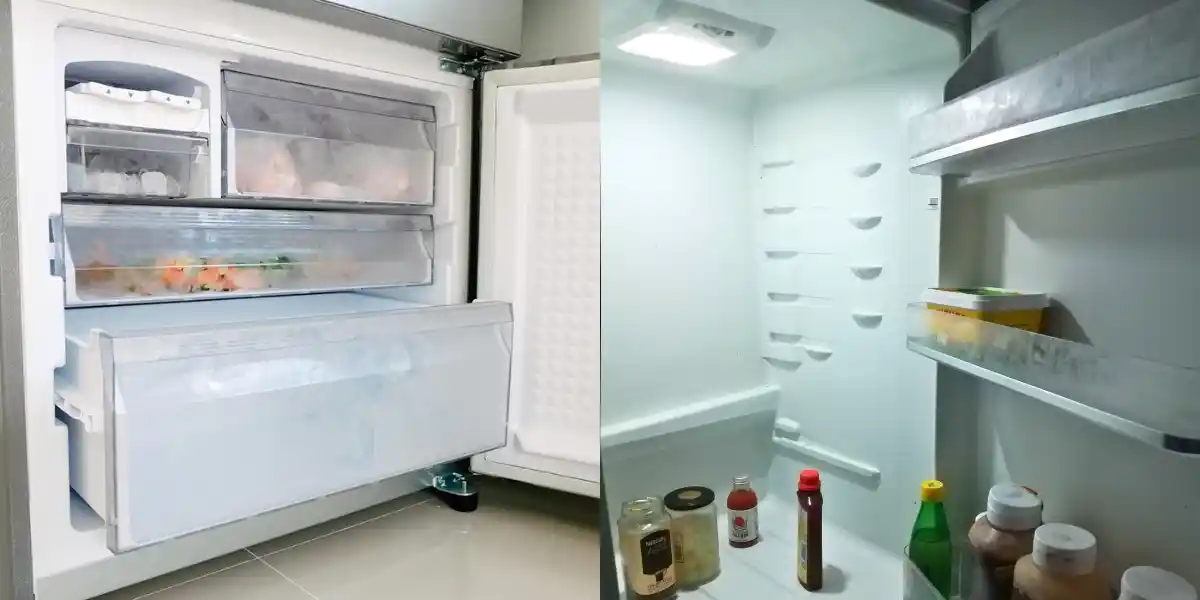
Why is My Fridge Freezing at the Bottom and Warm at the Top?
Your fridge is freezing at the bottom and warm at the top due to a faulty or blocked airflow system.
The cold air sinks to the bottom, causing freezing, while the warm air rises, resulting in insufficient cooling at the top.
Common Causes of Freezing at the Bottom and Warming at the Top
1. Inversion Layer in the Atmosphere:
One possible explanation for freezing at the bottom and warming at the top lies in the phenomenon known as an inversion layer in the atmosphere.
Normally, the temperature decreases as you ascend higher into the atmosphere.
However, under certain conditions, such as during a temperature inversion, the opposite occurs.
In an inversion layer, a layer of warm air sits above a layer of cold air near the surface.
As a result, the bottom part experiences freezing temperatures, while the upper region remains relatively warm.
2. Inadequate Air Circulation in Refrigeration Units:
In refrigeration systems, particularly refrigerators or freezers, insufficient air circulation can lead to freezing at the bottom and warming at the top.
This problem often arises when the airflow within the unit is obstructed by improper placement of food items or blocked vents.
When cold air fails to circulate effectively, it tends to settle at the bottom, causing freezing in that area.
Meanwhile, the warm air rises and accumulates at the top, resulting in elevated temperatures in that zone.
3. Faulty Heating Element in Water Heaters:
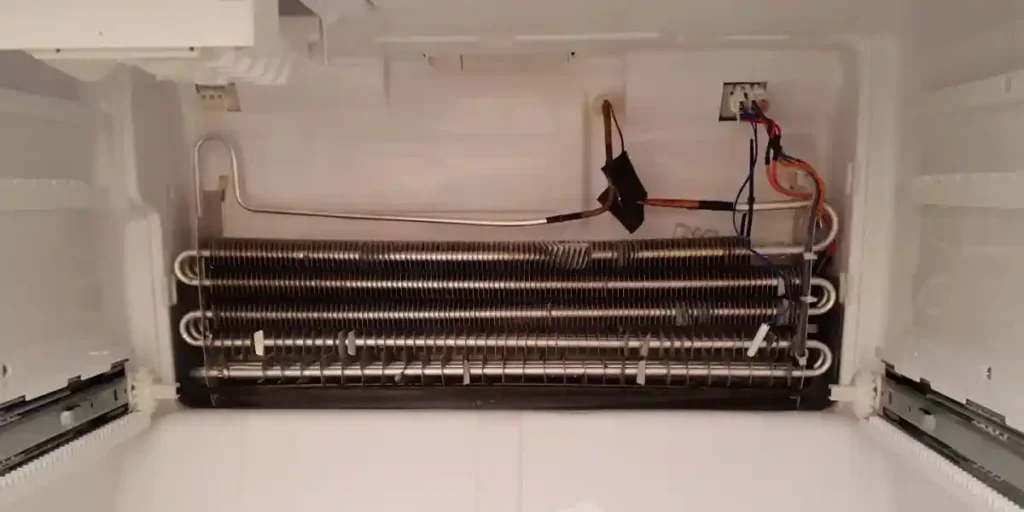
If you notice freezing temperatures at the bottom and warming at the top of your water heater, a malfunctioning heating element could be to blame.
Water heaters typically consist of a heating element located near the bottom, responsible for raising the water temperature.
When this element fails to function correctly, the lower section of the tank may freeze while the upper portion remains warm due to the residual heat trapped above.
4. Stratification in Natural Bodies of Water:
In natural bodies of water, such as lakes or reservoirs, the phenomenon of stratification can lead to freezing at the bottom and warming at the top.
Stratification occurs when the water column separates into distinct layers based on temperature and density.
The colder and denser water sinks to the bottom, while the warmer and less dense water remains at the surface.
During winter, when air temperatures drop significantly, the upper layer of water loses heat to the atmosphere, causing it to cool down and eventually freeze.
5. Faulty Thermostat or Temperature Control:
In certain appliances, such as ovens or HVAC systems, a malfunctioning thermostat or temperature control mechanism can lead to freezing at the bottom and warming at the top.
When the thermostat fails to regulate the temperature accurately, it can result in uneven heating or cooling within the system.
Potential Risks and Issues Associated with Uneven Cooling
By identifying these issues, you can take appropriate measures to rectify the situation and restore comfortable and consistent cooling throughout your space.
1. Strain on HVAC System:
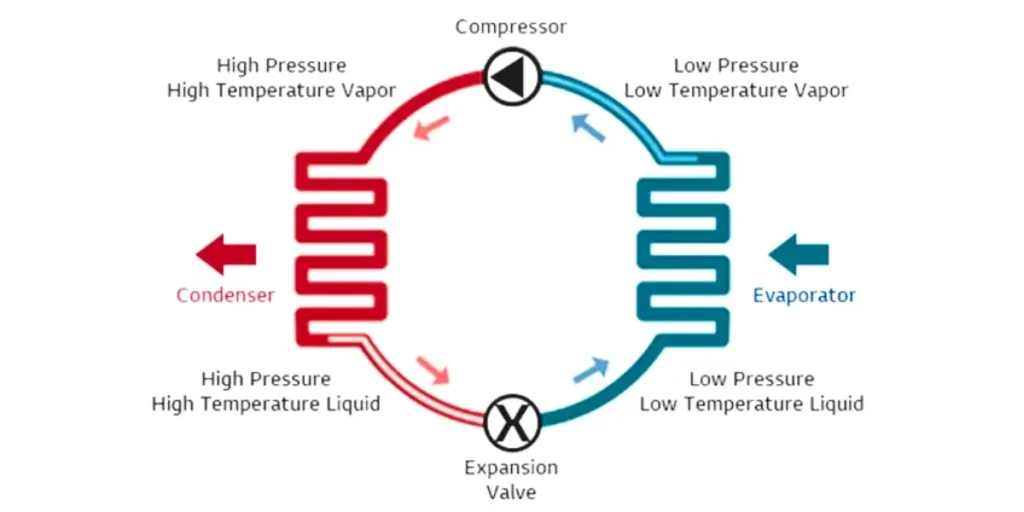
Uneven cooling can place a significant strain on your HVAC (Heating, Ventilation, and Air Conditioning) system.
When certain areas receive inadequate airflow or cooling, the system has to work harder to compensate for the imbalance.
This increased strain can lead to higher energy consumption, reduced efficiency, and potential wear and tear on the system components.
Over time, this strain may result in a shorter lifespan for your HVAC system and the need for costly repairs or replacement.
2. Comfort and Temperature Discrepancies:
Uneven cooling creates discomfort and temperature discrepancies within your living or working space.
Areas that are warmer than desired can be unpleasant, especially during hot summer months.
It can make certain rooms or zones less usable and compromise the overall comfort of the environment.
Inconsistent temperatures can also lead to conflicts among occupants, as individual preferences may differ.
3. Reduced Indoor Air Quality:
Uneven cooling can also contribute to reduced indoor air quality. When certain areas receive insufficient cooling, moisture levels may rise, creating a favorable environment for mold and mildew growth.
Additionally, stagnant air in warm spots can lead to a buildup of allergens, dust, and other pollutants.
These issues can negatively impact the health and well-being of occupants, particularly those with respiratory conditions or allergies.
4. Increased Energy Consumption and Costs:
Uneven cooling often results in increased energy consumption and higher utility bills.
When some areas are overcooled while others remain warm, the HVAC system has to compensate by running for longer periods or at higher intensities.
This leads to unnecessary energy wastage and inflated costs.
5. Potential Damage to Electronics and Equipment:
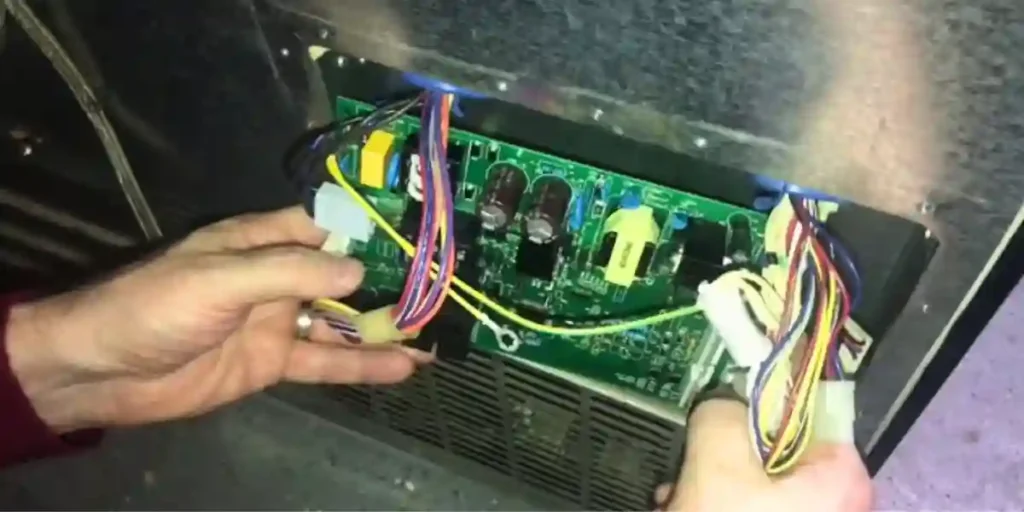
Uneven cooling can pose a risk to sensitive electronics and equipment.
Areas that are excessively warm may cause overheating and damage to devices such as computers, servers, or audiovisual equipment.
Fluctuating temperatures can also affect the performance and longevity of appliances and machinery.
Factors Affecting Temperature Distribution in a Refrigerator
By identifying and addressing these factors, you can ensure consistent and safe cooling throughout your refrigerator.
1. Placement of Food Items:
The way you arrange food items in your refrigerator can impact temperature distribution.
Avoid placing hot or warm items directly into the fridge, as this can cause localized warming and affect the overall temperature.
Instead, allow cooked or hot foods to cool to room temperature before storing them.
Additionally, ensure that you don’t overcrowd the refrigerator. Adequate spacing between items promotes proper airflow and enables the cold air to circulate evenly.
2. Air Vents and Circulation:
The location and condition of air vents in your refrigerator play a crucial role in temperature distribution.
Check that the vents are not blocked or obstructed by food items or packaging.
Blocking the vents can impede the flow of cold air and result in uneven cooling.
Promote proper airflow by organizing food items away from the vents. Allow the cold air to circulate freely throughout the refrigerator to maintain consistent temperatures.
3. Temperature Settings:
The temperature settings you choose for your refrigerator can affect temperature distribution.
Check the manufacturer’s recommendations for the ideal temperature range and ensure that you set your refrigerator accordingly.
Typically, the refrigerator compartment should be set between 35°F (2°C) and 38°F (3°C).
Regularly monitor and adjust the temperature settings based on your specific needs and seasonal changes.
Keep in mind that extremely low temperatures can lead to freezing, while higher temperatures may compromise food safety and freshness.
4. Door Usage and Sealing:
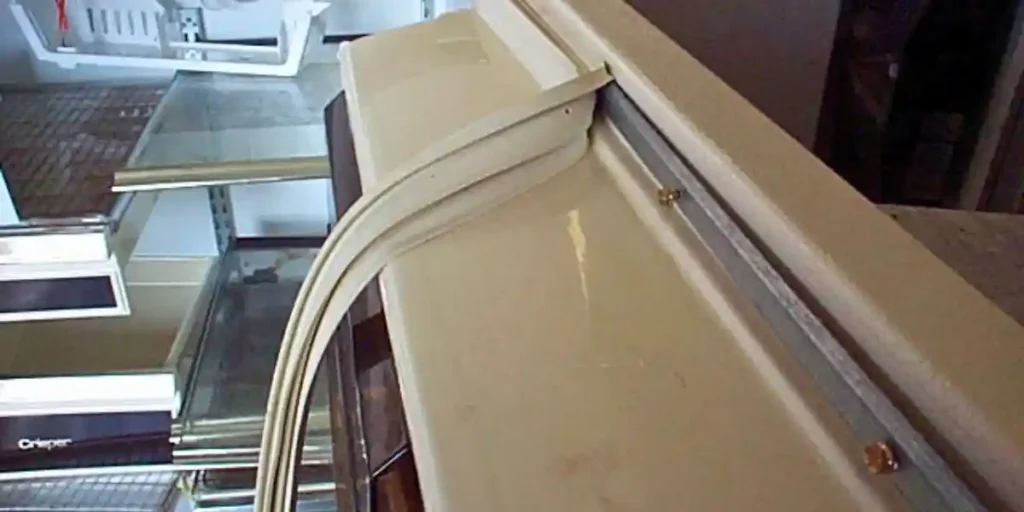
Frequent and prolonged opening of the refrigerator door can disrupt temperature distribution.
Every time the door is opened, warm air enters the refrigerator, and cold air escapes. This can result in temperature fluctuations and uneven cooling.
Minimize door openings and reduce the duration of each opening to maintain stable temperatures.
Ensure that the refrigerator door seals tightly when closed. Check for any gaps, damage, or wear in the door seals and replace them if necessary to prevent air leakage.
5. Maintenance and Defrosting:
Regular maintenance and defrosting of your refrigerator are crucial for optimal temperature distribution.
Ice or frost buildup on the evaporator coils can hinder the cooling process and lead to uneven temperatures.
Follow the manufacturer’s instructions for defrosting your refrigerator periodically or as needed.
Properly clean and maintain the appliance, including removing debris or dust from the condenser coils, to ensure efficient operation and consistent cooling.
6. Location and Environment:
The location of your refrigerator and the surrounding environment can impact temperature distribution.
Avoid placing the refrigerator near heat sources such as ovens, stoves, or direct sunlight, as this can cause localized warming and affect overall cooling.
Additionally, ensure proper ventilation around the refrigerator. Leave sufficient space between the appliance and nearby walls or cabinets to allow for adequate airflow and heat dissipation.
Maintaining Optimal Temperature in Your Fridge: Tips and Tricks
By implementing a few simple tips and tricks, you can effectively manage the temperature in your fridge and keep your food in the best possible condition.
Step 1: Set the Correct Temperature
Start by setting the correct temperature for your fridge. The recommended temperature range for most refrigerators is between 35°F (2°C) and 38°F (3°C).
Check your fridge’s temperature settings and adjust them accordingly. Use a refrigerator thermometer to verify the actual temperature inside the fridge and make any necessary adjustments to ensure it falls within the recommended range.
Step 2: Organize Your Fridge
Proper organization of your fridge plays a significant role in temperature management.
Place perishable items, such as dairy products, meat, and seafood, on the lower shelves where the temperature is coldest.
This helps prevent these items from being exposed to higher temperatures that may occur when the fridge door is opened frequently.
Store fruits and vegetables in designated crisper drawers to maintain their freshness and prevent cross-contamination.
Keep condiments, beverages, and other non-perishable items on the upper shelves or in the door compartments.
Step 3: Avoid Overloading the Fridge
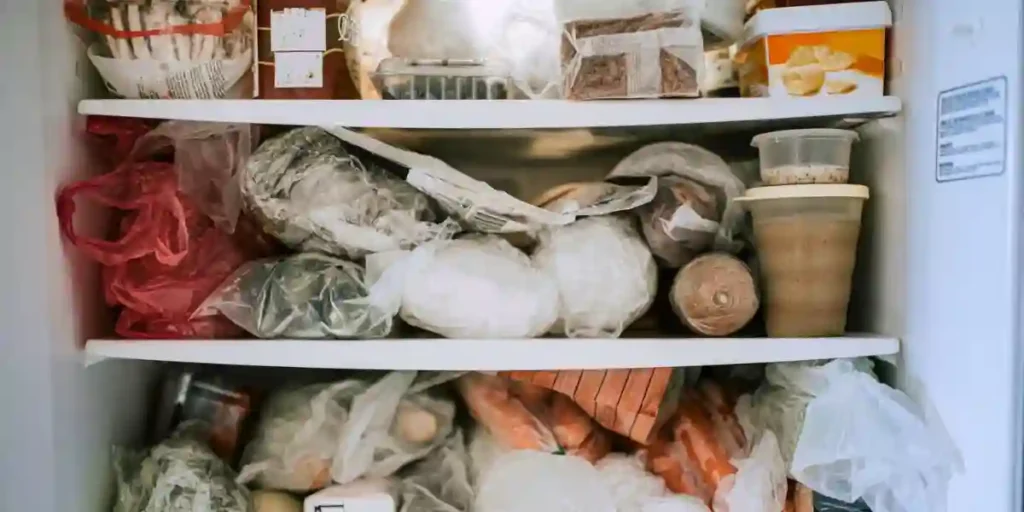
Overloading your fridge can impede proper air circulation and result in uneven cooling.
Avoid overcrowding by leaving sufficient space between food items. This allows cold air to circulate freely and maintains consistent temperatures throughout the fridge.
If your fridge tends to get packed, consider removing unnecessary items or finding alternative storage space outside the fridge for items that don’t require refrigeration.
Step 4: Check Door Seals and Close the Door Properly
Damaged or worn-out door seals can cause air leaks, leading to temperature fluctuations and energy wastage.
Regularly inspect the door seals for any signs of wear, gaps, or damage. Clean the seals with mild soap and water to remove any debris or sticky residue that may compromise their effectiveness.
Ensure that the fridge door is closed properly and tightly sealed after each use. Avoid leaving the door open for extended periods, as this allows warm air to enter and disrupt the cooling process.
Step 5: Maintain Proper Airflow
Good airflow is essential for maintaining optimal temperature in your fridge. Keep the air vents inside the fridge clear of any obstructions, such as food items or packaging.
Blocked vents can hinder the circulation of cold air, resulting in uneven cooling.
Regularly clean the vents and remove any dust or debris using a soft brush or cloth. This helps ensure proper airflow and temperature distribution throughout the fridge.
Step 6: Clean the Condenser Coils
The condenser coils of your fridge can accumulate dust and debris over time, affecting the cooling efficiency.
Clean the condenser coils at least once or twice a year to remove this buildup. Refer to your fridge’s manual for specific instructions on accessing and cleaning the coils.
Use a vacuum cleaner with a soft brush attachment or a coil cleaning brush to gently remove the dust and debris from the coils.
This helps maintain proper heat dissipation and allows the fridge to operate more efficiently.
FAQs
1. Can A Faulty Thermostat Cause This Problem?
Yes, a faulty thermostat can disrupt temperature regulation and lead to uneven cooling.
2. What Should I Do If My Fridge Has Ice Buildup At The Bottom And Warm Temperatures At The Top?
1. Defrost the fridge to remove ice buildup and restore proper cooling.
2. Inspect and repair any issues with the defrost system, such as a faulty heater or timer.
3. Can A Malfunctioning Evaporator Fan Contribute To This Issue?
Yes, a malfunctioning evaporator fan can disrupt airflow, resulting in uneven cooling.
4. Why Is It Important To Clean The Condenser Coils Of My Fridge?
Cleaning the condenser coils improves cooling efficiency and prevents temperature imbalances.
5. Should I Seek Professional Help If I Can’t Resolve The Issue On My Own?
If troubleshooting steps don’t resolve the problem, it’s advisable to consult a professional technician for further diagnosis and repair.
Conclusion
Achieving consistent cooling in your fridge is crucial for preserving the freshness of your food.
If you’re experiencing freezing at the bottom and warming at the top, take action to address common issues such as inadequate airflow, temperature control problems, and faulty components.
By organizing your fridge, cleaning vents and coils, and adjusting settings, you can restore optimal cooling and enjoy a well-functioning refrigerator that keeps your food at its best.
